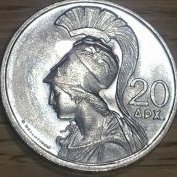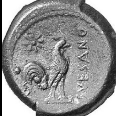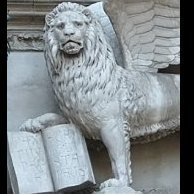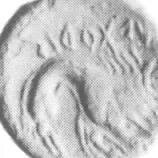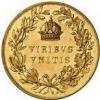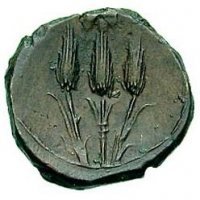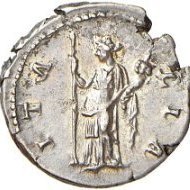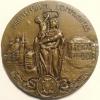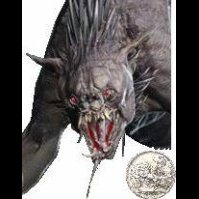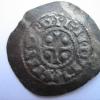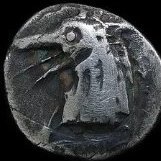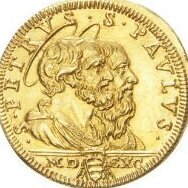Classifica
Contenuti più popolari
Elenco dei contenuti che hanno ricevuto i maggiori apprezzamenti il 06/01/20 in Risposte
-
5 punti
-
Beh, ti ringrazio per il compassionevole commento, ma più che di buona conservazione, la chiamerei buona...corrosione? Ciaooooo3 punti
-
From circulation in May 2020, this (first-year) Jefferson nickel of 1938... v.3 punti
-
Dalla data odierna, 01 giugno 2020, abbiamo ritenuto opportuno quanto segue: - Dare un assetto migliorativo alla Sezione creando una pagina nella quale poter inserire suggerimenti, chiarimenti, contributi e svolgere qualsiasi attività che esula dalle discussioni prettamente inerenti l’argomento moneta/monete. - Istituire una pagina della Comunicazione, nella quale i Curatori inseriranno, quando occorre e qualora ci fosse bisogno, notizie, informazioni e avvisi di vario genere. - Eliminare dal primo piano (Importanti) tutte le discussioni a contenuto Numismatico che riguardano la monete/le monete in generale; questo per rendere fruibile il maggior numero di discussioni nella pagina iniziale della Sezione in ordine agli ultimi post introdotti dagli Utenti. A tal riguardo è valido precisare che le discussioni con interventi frequenti comunque assumeranno sempre la posizione più alta, cronologicamente, in Sezione e il prodotto finale non modifica sostanzialmente quello che fino a ieri eravate abituati ad osservare, con l’unica variazione che poi sarebbe quella di non vederle più segnalate tra le discussioni Importanti. I Curatori ringraziano....e buon lavoro a tutti.2 punti
-
Presentazione del volume MUSEI REALI TORINO. Le collezioni numismatiche. I. Il Medagliere Reale. Storia e collezioni a cura di Federico Barello, Elisa Panero, Serafina Pennestrì Introduce e modera Pierangelo Gentile, Università degli Studi di Torino Presentazione webinar giovedì 25 giugno, ore 17.00 In occasione della riapertura dei Musei Reali, viene pubblicato e messo disposizione on-line il primo volume relativo alle collezioni numismatiche dei Musei Reali di Torino, realizzato in collaborazione con la Direzione Generale Archeologia, Belle Arti e Paesaggio e in raccordo con la Soprintendenza ABAP di Torino. I due volumi sono dedicati alle grandi raccolte numismatiche e offrono per la prima volta una panoramica sui due medaglieri, tra gli esempi storicamente e qualitativamente più rilevanti del collezionismo numismatico pubblico nel panorama museale italiano, europeo e internazionale. Modalità di partecipazione Iscrizione via mail a [email protected] (max 100 partecipanti)2 punti
-
2 punti
-
2 punti
-
Immagino possa trattarsi di un pound egiziano attuale che essendo un poco simile nella struttura bimetallica e nel diametro ai 2 euro può aver indotto l'utente in errore. https://en.numista.com/catalogue/pieces26558.html Spesso queste monete bimetalliche simili ai 2 euro possono entrare in circolazione in maniera fraudolenta ed essere spacciate per quello che non sono. Il pound egiziano vale circa 0,06€ quindi il motivo del suo ingresso in circolazione è presto spiegato...2 punti
-
Posto questa scheda intitolata l'oro dei castelli che pubblicizza una mostra dell'artigianato orafo dei castelli romani svolta nel palazzo comunale a Velletri, tra l'altro qualche giorno fa ho postato una votiva richiamante Velletri2 punti
-
@doppiopunto, questa è l'ultima immagine che hai postato del libro sull'Archivio Storico del Banco di Napoli. Ebbene, l'autore della Pianta è Paolo Petrini ed è stata stampata a Napoli nel 1748. Quella che pubblico è un ingrandimento della stessa dove la lettera P indica la zecca ( memtre il 33 è il convento di Sant'Agostino alla Zecca). L'originale della pianta topografica è custodita presso la BNN ed è visibile a chiunque, visto che è appesa nella sala prospiciente la sezione manoscritti e rari.2 punti
-
Ciao @miza , hai fatto bene! anch'io ho messo banconote del costo di un euro in questa discussione.2 punti
-
Buon pomeriggio a tutti ...con 1 euro: Dopo tre mesi di inattività numismatica "forzata" questa mattina in un supermercato che spazia dal cibo alla cartoleria ho scoperto un angolo dedicato alla numismatica - filatelia e visto che proprio qualche giorno fa leggevo questa interessante discussione di qualche anno fa: ho comprato per un euro questo "liangpiao" del 1975. Scusate se sono andato off topic postando in questa discussione dedicata alle monete un buono cinese cartaceo...2 punti
-
1938 Regno Unito - Giorgio VI° - 1 Penny Questa non so perché l'hanno argentata trovata in ciotola, per 20 centesimi l'ho presa come curiosità.2 punti
-
2 punti
-
1938 5 cent Regno d'Italia (anche se in pessime condizioni).2 punti
-
Buongiorno a tutti, inizio la settimana condividendo una Scheda Telefonica che vanta l'utilità ed i vantaggi di avere una segreteria telefonica. Saluti Alberto2 punti
-
Sull'argomento mi permetto di suggerire la lettura del "Giornale dell'assedio di Costantinopoli", scritto dal veneziano Nicolò Barbaro che fu testimone oculare. E' scaricabile legittimamente da qui: http://dbooks.bodleian.ox.ac.uk/books/PDFs/590053060.pdf2 punti
-
Riprendo dopo molto tempo la discussione presente con un nuovo acquisto, comune ma carino o almeno collezionabile.2 punti
-
Buongiorno a tutti e buona domenica, sono un grande collezionista di rottami e di monete in bassissima conservazione, il 95% della mia collezione è composta così, per me sono ricche di storia e continuerò a conservarle e se mi capita ad acquistarle, i mezzi che ho a disposizione sono limitati e mi accontento, mi piace postarle, mi piace partecipare, condividere, rispetto le opinioni di tutti, per me lo spirito del forum deve essere di Fratellanza, a me piace mettere in mostra qualche bel pezzo che ho, ma è lo stesso con quelle in cattivo stato di conservazione. Ognuno è libero di impostare la propria raccolta come meglio crede, riguardo ai like, sono manifestazione di apprezzamento del tutto spontanei. Mi è capitato di aprire discussioni rimaste senza interventi, senza emoticon, senza niente, ma non ne ho fatto un dramma. Ho solo due monete di Francesco I, vi assicuro che ho postato la più bella che ho in questa discussione. ? Ben vengano questi confronti, a mio avviso sono meglio dell'indifferenza. Saluti Alberto2 punti
-
Un grano da 12 cavalli in rame del 1786. Asta Nomisma n. 54 del 2016, lotto 1310. Magliocca 310.2 punti
-
Buongiorno a tutti, ieri in asta internazionale mi sono aggiudicato una monetina di Diocletianus con rovescio incuso. Una curiosità che ritengo interessante. Cosa ne pensate ? Avete informazioni su altre monete imperiali con questa varietà ? Grazie a chiunque voglia intervenire, Marco1 punto
-
Le medaglie papali del 1900 non sono state oggetto di speculazioni ed hanno un basso costo (è quello della emissione di una medaglia attuale) , sicchè è difficile pensare a svalutazioni. Forse non vi saranno neanche aumenti se non ci sarà un incremento della passione per questa forma di collezionismo, che non è mai stata molto consigliata (non vi sono stock in mani robuste) e che potrebbe essere incrementata solo a mezzo di studi, che dopo un periodo di produzione abbastanza importante sono un po' in difficoltà per i costi editoriali molto alti nelle pubblicazioni di pregio (per il momento non è avanzata l'idea delle pubblicazioni economiche, di un catalogo specifico). La tua analisi nell'ambito delle medaglie papali moderne è corretta. Papa Benedetto XV è il pontefice con poche medaglie straordinarie e presumibilmente con le tirature più basse per quanto riguarda le medaglie annuali/ufficiali. Va considerato che il suo pontificato coincide in gran parte con il primo conflitto mondiale e ciò spiega la limitata emissione di medaglie straordinarie ed anche la restrizione delle coniazioni per carenza di metallo (decisamente rare sono le annuali in bronzo). Il collezionista può allora domandarsi perché il prezzo è sostanzialmente uguale a quello delle medaglie di altri pontefici. La medaglistica in bronzo è poco richiesta quando si reperisce facilmente l'argento a basso prezzo. Quanto al confronto tra pontefici, ho rilevato che alle collezioni generalizzate per periodo si sono sempre affiancate collezioni per singoli pontefici, sviluppate soprattutto nelle località o regioni della loro provenienza o per senso di appartenenza alla loro epoca. I collezionisti specifici di Benedetto XV sono pochi; il pontefice proviene dalla Liguria , regione abbastanza estranea per tradizione e cultura alla influenza "romana". Ho conosciuto invece molti collezionisti per pontefici marchigiani o romagnoli e anche per Pio X, oltre che per Pio XII e Giovanni XXIII in quanto in tempi passati di attualità per la condivisione diretta del loro messaggio.1 punto
-
1 punto
-
1 punto
-
POP!! "Ravanando" nei meandri della mia biblioteca è saltato fuori un testo di cui non ricordavo la presenza, si tratta del catalogo di una mostra tenutasi nel 1987 a Firenze intitolata : L'oro di Kiev. Nel testo si tratta delle varie civiltà che si sono susseguite nell'Europa dell'est, cominciando dai Cimmeri e proseguendo con gli Sciti e Sarmati, approdando al medioevo descrive Unni, Khazari, Peceneghi, Comani, Slavi orientali e per finire i Rus' di Kiev, naturalmente vista la vastità e la complessità dei temi trattati si tratta solo di qualche accenno o poco più per ogni cultura. Stranamente in tutto il catalogo non vengono citati gli Avari, non so se il motivo sia la relativa "antichità" del testo e quindi una specie di "ignoranza" dei curatori per quanto riguarda la questione avara oppure se si tratti di una pregressa malafede da parte degli ucraini prestatori nei confronti della cultura degli Avari che li ha spinti ad ignorarli completamente pur essendo stati protagonisti sul palcoscenico pannonico ucraino per almeno un paio di secoli. Comunque testo interessante dalla lettura scorrevole e godibile che offre un ulteriore punto di vista su una sempre troppo misconosciuta storia dell'est europeo.1 punto
-
Purtroppo coi 10 baht tailandesi (al cambio 0,28€) c'è stata una vera e propria truffa ben organizzata e sono stati messi in circolazione in modo fraudolento in grandissime quantità su internet abbondano articoli di giornale sull'argomento.. https://napoli.fanpage.it/monete-thailandesi-al-posto-dei-2-euro-occhio-al-resto/ https://www.ilgiornale.it/news/cronache/monete-thailandesi-i-2-euro-attenzione-truffa-1380762.html1 punto
-
Per quel che riesco a vedere a me sembra che l'argento sia completamente cristallizzato, che abbia prodotto una patina naturale sopra la quale vi sia uno strato di sostanza nera che sembra più una "colatura" e che ha incluso altro materiale, riconoscibile in quelle piccole particelle sporgenti che ricoprono tutta la moneta. Dello stile, soprattutto sul rovescio si capisce poco però a me sembrerebbe compatibile con il periodo, il peso per come è usurato questo denario, e viste anche tutte le varie mancanze di metallo ci sta che sia scarso.1 punto
-
1 punto
-
Le medaglie annuali in argento da Leone XIII a Pio XII sono tutte piccoli capolavori e che si acquistano a buon prezzo (con l'eccezione dell'anno XXV di Leone XIII con la mozzetta). Anche Gregorio XVI e Pio IX hanno esemplari stupendi, ma con prezzi che oltre lo Spl non sono tanto bassi. Verifica quindi il tuo budget con la durata del pontificato ed inizia senz'altro una collezione che sarà un piacere per gli occhi.1 punto
-
Ciao a tutti, ciao @apollonia hon ho un catalogo caraceo a casa, ma in rete ho trovato questo: https://de.ucoin.net/table/?country=austria&period=810 Sei sicuro che esista un 1/2 kreuzer del 1785? Spero di non aver detto la prima idiozia della settimana... Servus Njk1 punto
-
È pur sempre collezionabile, ha valore storico e numismatico. Inoltre lo stile del Cristo risorto per il XIV secolo è di grande fascino su una monetina d'argento.1 punto
-
Tranquillina con Artemide THRACE, Hadrianopolis. Tranquillina, wife of Gordian III. Augusta, AD 241-244. Æ 24mm (6.14 g). Diademed and draped bust right / Artemis walking right, drawing arrow from quiver and holding bow, hound running before. Youroukova 689 (V286/R649); SNG Copenhagen -. VF, brown surfaces, some minor roughness. CNG 158, Lot: 151. Estimate $100. Sold for $188.1 punto
-
Dopo mesi e mesi di assenza, sommerso da impegni di ogni genere, oggi pomeriggio mi sono detto "Toh... è un sacco di tempo che non entro nel forum: fammi vedere che si dice" e mi sono trovato chiamato in causa da @Adelchi66 e da @Agricola, che ringrazio per gli immeritati apprezzamenti che mi hanno rivolto. Così - senza la pretesa di fornire una risposta definitiva - vi scrivo come la penso sull'interessante faccenda della divinità bifronte. La derivazione etrusca del dio romano sembra certa, tuttavia qui si tratta di capire se ci fosse dietro un antecedente medio-orientale. Io ci andrei cauto e penserei piuttosto a un archetipo comune a tutti i popoli antichi: in archeologia esistono quelle che vengono chiamate coincidenze necessarie, in virtù delle quali popoli lontanissimi arrivano alle stesse forme di cultura materiale. Per capirci, è quello che succede con le piramidi, costruite tanto dai Maya come dagli Egiziani, senza che questi si fossero mai incontrati. Ugualmente deve essere accaduto con Giano: il concetto di passato /futuro (ma anche di entrata /uscita) è comune a tutti i popoli e trova la sua naturale trasposizione in due volti contrapposti che guardano verso direzioni opposte. Così, può essere accaduto che popoli differenti, in epoche differenti, abbiano espresso nel medesimo modo la medesima idea. Un caro saluto e cercherò di essere meno assente, G.1 punto
-
La catalogazione e la zecca sono corrette, per l'anno non saprei cosa dirti, su altri siti non ho trovato indicazioni sulla data di coniazione1 punto
-
A Fxx . Sarà la sorella del 20 centesimi libertà librata . Un cordiale saluto. Gabriella.1 punto
-
Ho seguito oggi l'asta in oggetto, notando come molti lotti siano stati combattuti, andando molto oltre la stima. Dopo Pio XII mi sono scollegato, ma sino ad allora gli invenduti sono stati assai meno del previsto, e si trattava sempre o di devozionali bruttine o di pezzi molto vissuti. Chi poi avesse cercato di portarsi a casa un'annuale in argento di Leone XIII oggi cascava male: c'era un cinese che rilanciava sempre e comunque fino all'aggiudicazione! Mi fa piacere che questa nicchia di mercato, ricca di pezzi stupendi e spesso sottovalutati, dia segni di risveglio.1 punto
-
salve , credo non valga la pena di aprire una nuova dicussione per parlare di questo "obrobrio", visto che si tratta di un tipo di falsa dracma insubre di cui abbiamo gia parlato diverse volte. La novita stavolta é che ha oltrepassato i confini del nostro paese ed é apparsa in un'asta inglese da pochghissimi giorni.....1 punto
-
Beh anche le monete in pessime condizioni hanno una loro dignità!1 punto
-
Buongiorno, anch'io di primo acchito avevo pensato a Leone III e Costantino V, in un tremisse dall'oro tanto scarso da sembrare argento come quello postato da @Poemenius. Però su nessuna delle facce leggo il nome di Leone, come ovviamente dovrebbe essere, anzi addirittura su entrambe mi sembra di leggere ...KONST... il che mi appare quanto meno strano, perché a quanto io ne sappia non esistono monete emesse da due regnanti a nome Costantino, né altre che presentano lo stesso imperatore sia al diritto che al rovescio. In conclusione questa originale composizione della moneta mi solleva molti molti dubbi. Spero comunque di essere smentito. HIRPINI1 punto
-
Le medaglie Papali potrebbero benissimo essere iscritte come patrimonio dell'umanità per il valore intrinseco legato alla testimonianza storica, filosofica, culturale ed artistica dei Pontefici e d'Italia. Gran parte degli avvenimenti, dei monumenti, delle rivoluzioni culturali e spirituali sono incise nella storia metallica dei Papi. L'interesse collezionistico dovrebbe essere rivolto a conservare la medaglia che potemmo chiamare l'iconografia della storia e dell'arte. Per questo non mi stupisce la Tua relazione e mi fa molto piacere sapere che Vi è stato interesse internazionale....poco alla volta si va comprendendo che una medaglia rappresenta una testimonianza della storia. La fantastica raccolta di un caro amico, esitata on-line da Varesi, con tante presenze importanti e molte medaglie rarissime e inedite, sicuramente è stato un evento di grande richiamo, anche per gli appassionati di "medagliette" devozionali: testimonianza della fede nell'arco dei secoli. @Viribus Unitis1 punto
-
1 punto
-
Bene. Vedo che siamo tutti d'accordo... Che ne dite di ripartire dall'inizio? Cioè dall'inizio del Regno con due bei 5 Centesimi del 1861 (anche questi postati tempo fa). Manca quello di Napoli che ho in pessime condizioni (non ho ancora trovato quello che mi soddisfi), per cui invito un volenteroso a postare il proprio in buona conservazione per completare il trittico.1 punto
-
Chiedo scusa per l'off topic (temporale ma non geografico), ma ci tenevo a pubblicare anche una moneta a cui tengo tanto. 50 Centesimi ossidionali battuti a Palmanova (UD) per Napoleone nel 1814 con mezzi di fortuna in un casale all'esterno delle mura palmarine (il metallo effettivamente è una lega prodotta con molti oggetti di uso comune). Su questa moneta - e sulla sua sorella da 25 centesimi esistente forse come prova in un unicum al museo di Udine (da cui il buon Walter Muschietti aveva tratto il calco in gesso negli anni '80) - si è scritto molto. Come tutte le monete ossidionali, ha un suo fascino particolare, evidente anche nelle N retrograde e nel puntino del compasso sotto CENT, una realizzazione grezza ma efficace. Il mio esemplare ha pure una perizia Emilio Tevere, da cui l'ho tolta ma che conservo con affetto.1 punto
-
Qualche informazione sui Cimbri : Antica popolazione di stirpe germanica. Dalle sedi originarie sulla destra dell'Elba (Jylland o Jütland, Holstein e Schleswig), alla fine del sec. II aC mossero contro i Teutoni verso il centro e il sud della Germania, ma, risospinti dai Boi, penetrarono lungo la valle del Danubio sconfiggendo nel 113 il console romano Papirio Carbone. Entrarono poi in Gallia, rafforzati da gruppi di Elvezi, e sconfissero diversi eserciti romani. Fu Gaio Mario a stroncarne per sempre la furia aggressiva con le memorabili sconfitte che inflisse nel 102 ai Teutoni ad Aquae Sextiae (odierna Aix-en-Provence) e ai Cimbri nel 101 ai Campi Raudii, presso Vercelli. Festo in De verborum significatione così dice dei Cimbri: Cimbri lingua Gallica latrones dicuntur. I Cimbri erano una tribù germanica che assieme ai Teutoni e agli Ambroni invasero il territorio della repubblica romana alla fine del II secolo aC. Le fonti antiche individuano la loro origine nel nord delle Jutland. Origine e nome Secondo le fonti greche e romane i Cimbri provenivano dallo Jutland, che era chiamato Chersonesus Cimbrica dal loro nome. Secondo le Res gestae (c. 26) di Augusto, i Cimbri erano ancora presenti nella penisola danese intorno all'anno 1. « Classis mea per Oceanum ab ostio Rheni ad solis orientis regionem usque ad fines Cimbrorum navigavit, quo neque terra neque mari quisquam Romanus ante ide tempus adit, Cimbrique et Charydes et Semnones et eiusdem tractus alii Germanorum populi per legatos amicitiam meam et populi Romani petierunt.» « La mia flotta ha navigato attraverso l'oceano, dalle bocche del Reno verso la regione del sole nascente fino alle terre dei Cimbri, presso i quali nessun Romano era andato in precedenza né per mare né per terra, e i Cimbri, i Carudi, i Semnoni e altri popoli Germanici della stessa regione, con i loro ambasciatori chiesero l'amicizia mia e del popolo romano.» Augusto - Res gestae Lo storico greco Strabone testimonia che i Cimbri erano ancora presenti tra le tribù Germaniche, probabilmente nella "Cimbrica peninsula" (Geogr. 7.2.1): « Per quanto riguarda i Cimbri, delle cose che sono state dette su di loro alcune sono sbagliate e altre estremamente improbabili. Innanzitutto si potrebbe mettere in dubbio il fatto che siano diventati dei pirati nomadi a causa di un'inondazione che avrebbe distrutto le loro dimore nella loro penisola natia [Jütland], infatti possiedono ancora le terre ove un tempo originariamente vivevano; e hanno inviato come dono ad Augusto il calderone più sacro del loro paese, come offerta della loro amicizia e come richiesta del perdono delle loro colpe precedenti e quando la loro richiesta fu accettata alzarono le vele per tornare a casa ed è ridicolo supporre che si siano allontanati dalle loro case perché messi in agitazione da un fenomeno che è naturale e che si verifica due volte ogni giorno. E l'affermazione che una volta ci sia stata una marea straordinaria sembra una montatura, perché se l'Oceano si comporta in questo modo con aumenti e diminuzioni, tuttavia sono regolati e periodici. » Sulle mappe di Tolomeo, i "Kimbroi" sono collocati nella parte più a nord delle penisola dello Jutland, cioè l'attuale Himmerland (giacché il Vendsyssel-Thy era in quel periodo un gruppo di isole). Himmerland (Old Danish Himbersysel) in genere è considerato che riporti il loro nome, in una forma più arcaica, senza la Legge di Grimm (PIE k > Germ. h). In alterna il Latin C- rappresenta un tentativo di rendere il non familiare proto-germanico [χ], forse da parte di interpreti di lingua celtica (intermediari celtici spiegherebbero anche il germ. *Þeuðanoz che divenne il latino Teutones). L'origine del nome non è conosciuta. Un'etimologia possibile è PIE "abitante", "casa" (> ing. home), a sua volta una derivazione da "live"; e quindi il germanico *χimbra- trova un esatto legame con lo slavico "fattore" (> croato, serbo sebar, russ. sjabër). A causa della somiglianza dei nomi i Cimbri sono spesso associati con i Cymry, il nome con cui i Gallesi chiamano se stessi. Tuttavia questa parola è generalmente fatta derivare dal celtico *Kombroges, nel significato di Compatrioti, ed è difficile pensare che i Romani abbiano registrato questa forma come Cimbri (la forma Cambri è neo-latino). Il nome dei Cimbri è stato anche posto in relazione con la parola kimme nel significato di "bordo", cioè il popolo della costa, ma questa ipotesi è incompatibile con l'associazione di Cimbri con Himmerland giacché kimme non mostra gli effetti della legge di Grimm. Ed infine dall'antichità il nome era stato accostato a quello dei Cimmeri. Lingua dei Cimbri Uno dei problemi maggiori è che in questo periodo Greci e Romani tendono a indicare tutti popoli a Nord della loro sfera d'influenza come Galli, Celti o Germani piuttosto indiscriminatamente. Cesare sembra esser stato uno dei primi autori a distinguere fra i due gruppi e aveva un motivo politico per farlo: era un argomento a favore del confine renano. Tuttavia non ci si può fidare completamente di Cesare e Tacito quando ascrivono individui e tribù all'una o all'altra categoria. Se i Cimbri avessero risieduto nello Jutland settentrionale si potrebbe dedurre che la loro lingua fosse Proto-Germanica. Al contrario vi sono indicazioni che portano a pensare che i Cimbri parlassero di fatto una lingua del ceppo celtico. Infatti, riferendosi all'Oceano del Nord (il Mar Baltico o il Mare del Nord), Plinio il Vecchio (circa 77 dC) scrive: « Philemon Morimarusam a Cimbris vocari, hoc est mortuum mare, inde usque ad promunturium Rusbeas, ultra deinde Cronium. » « Filemone disse che è chiamato Morimarusa, cioè Mare Morto, fino al promontorio di Rubea e dopo quello di Cronio.» Plinio il Vecchio - Naturalis Historia 4.95 Le parole per "mare" e "morto" sono muir e marbh in Irlandese e mor e marw in Gallese. La stessa parola per "mare è conosciuta anche nel germanico, ma con una a (*mari-), in quanto l'altra parola è sconosciuta in tutti i dialetti della Germania. Ancora, dato che Plinio non ha avuto la parola direttamente da un informatore cimbro, non si può affermare che quella parola sia in effetti Gallica ed è comunque possibile che il Mare del Nord o il Mar Baltico fossero considerati "morti" e "gelidi" dai Centro-Europei piuttosto che dagli Scandinavi, stanziati sulle coste del mare. Markale (1976) scrisse che i Cimbri furono associati agli Helvetii, e più specialmente con gli indiscutibili celti Tiguri. Come si vedrà più avanti, queste associazioni potrebbero condurre a una discendenza comune, richiamata da 200 anni prima. Inoltre, tutti i capitribù Cimbri conosciuti hanno nomi celtici, compreso Boiorix (re dei Boii), Gaesorix (re dei Gaesatae, mercenari celtici alpini), e Lugius (in onore della divinità celtica Lugh). Hubert (1934) afferma:"Tutti questi nomi sono celtici, non potrebbero essere altro." (Cap. IV, I) Fornisce molte informazioni riguardo questa questione ed altri aspetti rilevanti grazie a un approccio chiaro e oggettivo. A ogni modo, alcuni autori hanno prospettive differenti,:per esempio Wells (1995) afferma - senza alcuna prova - che i Cimbri, originari della Danimarca (la penisola Cimbra) non sono sicuramente Celti, in quanto i loro nomi vengono trasmessi attraverso scrittori classici in forme celtiche. Il calderone di Gundestrup, scoperto in una torbiera nel territorio Cimbro, è un testamento della vita celtica in ogni dettaglio, incluse sanguinarie cerimonie che coinvolgevano direttamente sacerdotesse, che prendevano luogo sopra un grande calderone. Posidonius, un antico storico dei Cimbri, 22 anni al tempo della loro affermazione nel mondo (113 aC), rende una descrizione verbale identica ai dettagli visuali sul calderone. I Cimbri veneravano anche il calderone stesso (ai tempi di Augusto usavano chiamarlo "il loro tesoro più prezioso"), il quale, in accordo con quanto detto sopra, indicherebbe una cultura e un comportamento tipici della cultura celtica e non germanica. Appiano di Alessandria, che scrisse il suo "Storia di Roma: Le Guerre Galliche" nel 130 aC parla di "Galli", "Celti" e "Germani". Riguardo i Cimbri afferma che erano un enorme clan composto da tribù celtiche guerriere, ai tempi in cui Cesare combatté i Germani. Altre prove della lingua del Cimbri sono circostanziali: a noi viene detto che i Romani arruolarono i Galli Celti per comportarsi come spie nei villaggi Cimbri, in modo da favorire la vittoria finale dell'armata romana nel 101 aC. Questa è una prova a supporto della teoria che vuole i Cimbri come Celti piuttosto che Germani. In modo simile, i re dei Cimbri e dei Teutoni portavano nomi in tutto e per tutto celtici (vedi Boiorix e Teutobodus). Dall'altra parte, l'origine di un nome non è necessariamente correlata con la provenienza della persona che lo porta e la sua appartenenza etnica. Non c'è comunque nulla che provi la correlazione dei nomi portati dai Cimbri con i nomi germanici. L'etimologia di cui sopra (PIE *t?im-ro-) sarebbe da considerare valida solamente in un contesto celtico (e nella forma latina sarebbe più facile da spiegare). Inoltre, le documentazioni romane categorizzano i Cimbri come una tribù germanica (Cesare, BG 1.33.3-4; Plinio, NH 4.100; Tacito, Germ. 37, Hist. 4.73). Inoltre, tutte le documentazioni classiche confermano unanimemente la patria dei Cimbri nello Jutland, e non c'è nessuna prova di una popolazione di lingua celtica nel sud della Scandinavia (i linguisti considerano lo Jutland una regione linguistica della Germania). Come si può quindi vedere, la "teoria germanica" si basa comunque su delle prove attendibili. Ad ogni modo, la teoria offre le seguenti possibilità: I Cimbri erano una popolazione di lingua germanica, e le informazioni riguardanti i nomi e le parole dateci dagli antichi autori sono inaccurate. I Cimbri erano orginariamente di lingua germanica, ma, avendo assorbito una quantità enorme di individui di lingua celtica durante il loro lungo viaggio dall'Europa Centrale all'Europa Occidentale, adottarono la lingua celtica. I Cimbri erano di lingua germanica, ma a causa dell'importanza della cultura celtica, l'élite delle tribù germaniche era bilingue (vedi parole celtiche adottate come *rikaz "nobile", *ambahtaz "servo"). I Cimbri parlavano una lingua celtica già nel loro paese d'origine, il Nord dello Jutland. I Cimbri erano una tribù celtica originaria dell'Europa Centrale, e avevano solamente il nome in comune con i Cimbri dello Jutland. http://www.summagallicana.it/lessico/c/Cimbri.htm1 punto
-
1 punto
-
DE GREGE EPICURI Cavallo? Ma allora, di che moneta si tratta? Anche se può sembrare un cavallo, mi pare che l'unica possibilità è che si tratti di un toro (con testa notevolmente consumata), quindi non Gerone 2° ma il periodo precedente, Agatocle, 317-289 a.C. Insomma, questa moneta (Calciati 108):1 punto
-
1 punto
-
Non vedo l'ora di ricominciare la ricerca! Però però…. da domenica 31, e sino a quando non ci vacciniamo tutti, posso fare un cazziatone stellare a chi si avvicina a meno di un metro (cosa che succede sempre) mentre rovisto qualche ciotola!1 punto
-
Devi chiedere immediatamente perdono a Dio Denaro onnipotente! Inginocchiati in direzione di Francoforte (sede della BCE) e prega.1 punto
-
Successiva di qualche anno, la lira di Andrea Gritti (passata al valore inflazionato di 24 soldi, dai 21 precedenti). Nonostante si tratti di monete relativamente "povere", e abbastanza comuni, questo esemplare e l'esemplare di picchio emanano un fascino particolare, anche per la ragguardevole conservazione. Ex NAC 43, lotto 162. FDC. Andrea Gritti doge LXXVII, (1523-1532) 6,49 g. ANDREAS GRITI - S M VENET S. Marco, stante a s., porge il vessillo al Doge genuflesso; lungo l'asta, D/V/X. Rv. TIBI SOLI - GLORIA Il Redentore con grande nimbo crociato, in piedi di fronte, benedice con la d. e tiene il globo crucigero nella s.; sul piedistallo, G Z (Zuan Grimani, massaro). Splendida patina e magnifico metallo. Ex Lanz asta 23, Graz 1982, collezione Marquis Alb. von Hohenkubin. P.S. ignoro se la collezione di provenienza (Marquis Alb. von Hohenkubin) vantasse particolari meriti.1 punto
Questa classifica è impostata su Roma/GMT+01:00
Lamoneta.it
La più grande comunità online di numismatica e monete. Studiosi, collezionisti e semplici appassionati si scambiano informazioni e consigli sul fantastico mondo della numismatica.
Il network
Hai bisogno di aiuto?



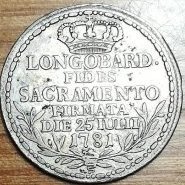

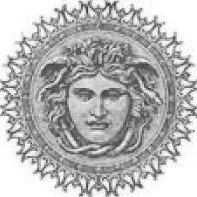


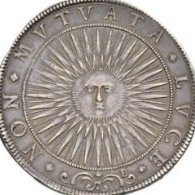
_compress55.thumb.jpg.3fa3bd76a5efe685e4de20ff9bd635b4.jpg)
